
Many neighborhoods on Chicago’s South Side are experiencing gentrification, the renovation of run-down urban neighborhoods that displaces low-income families and small businesses.
Englewood, a South Side community, is experiencing major change. The area is slowly but surely becoming gentrified, causing people who can’t afford to live in the renovated areas to move to other parts of the city or relocate to surrounding suburbs.
Teaming up with Ald. JoAnn Thompson (16th), Mayor Rahm Emanuel plans to bring easier access to healthy eating for the residents of Englewood in an effort to revitalize the area.
Emanuel spoke with optimism about the future of Englewood, which runs southwest from 55th Street to 79th Street and the Dan Ryan.
“I have worked with Whole Foods Market for the last year and a half to invest in one of our oldest neighborhoods and address a pressing need for fresh, healthy food, and I’m proud to announce this wonderful new facility that will help meet this need while creating a strong economic anchor in this community,” Emanuel said during the groundbreaking of the 18,000 square foot development that will be located on the corner of 63rd and Halsted, according a statement on the company’s website.
“I am completely committed to ensuring that all Chicagoans have access to fresh, quality and affordable food in their neighborhoods,” Emanuel said. “This store will not only provide these important resources, but it will also create jobs and spur economic growth, a true win-win.”
The store is expected to create up to 100 jobs for residents, according to the company.
While people await the store’s arrival, Whole Foods is working with The Greater Englewood Community Development Corporation to bring “Entrepreneurial Coaching” workshops for small businesses. Led by industry experts, the workshops will be at Kennedy King College.
But some residents question the motives behind the neighborhood’s gentrification.
“I think it’s a bunch of B.S.,” said Sean Torrey, an Englewood resident. “[The] White people are moving back to the city and they are pushing the Black people out to the suburbs where they don’t want to be.”
And other residents and store owners said Englewood’s troubles are due to neglect from city officials like Emanuel.
“If Mayor Emanuel had put as much effort and time into [our] neighborhood other than the Red Line, then a lot of the problems that we have today would not exist,” said Brittney Wilson, a resident of Englewood.
The problems include the city’s largest number of abandoned properties and a high crime rate.
Englewood has just 1 percent of the city’s residents, but 13 percent of the neighborhood is filled with vacant lots, according to data from the U.S. Census Bureau and the City of Chicago.
Englewood’s destitution is due to redlining, the practice of arbitrarily denying or limiting financial services to specific neighborhoods generally due to occupants being of color or poor, according to the Encyclopedia of Chicago.
Black people lived in Englewood, but were not the main inhabitants until the Great Migration in the 1950s. This later resulted in the Black Belt population in the 1960s, a decade during which their numbers grew from less than 1 percent to 14 percent. By the 1980’s the percentage of black residents had risen to 99 percent with an average household income of $18,853, which is well below the average household income of $34,682, according to the Encyclopedia of Chicago.
According to The Chicago Reporter, Englewood is ranked third among the city’s 25 police districts for murders and sexual assaults, and there are 2.8 violent crimes per 1,000 people, according to The Chicago Tribune.
Some neighborhood stores have been affected by the community’s level of crime, and many have relocated on their own in search for a safer property.
In 1998, there were numerous storefronts located from 69th and Halsted Street to 65th and Halsted Street. Many shut down due to foreclosure, with residents trying to turn them back into “Mom and Pop” stores. New businesses in Englewood, like Cricket Wireless, which made its home in a former pharmacy store, have had to roll with the punches Englewood has landed on them.
“Everyday day there are problems,” said Sonequa Burrus, assistant manager of Cricket Wireless. “We’ve had a lot of problems, but we try to communicate with the neighborhood to make it work for our safety and theirs.”
In the areas where renovations have started, homes are just as lovely as those in better neighborhoods. But to many outsiders, the neighborhood is still too rough for them to consider moving there.
“I didn’t even know they were renovating in that area, I think it’s great that they are, but I still wouldn’t live there,” said Kaitlin Portrakis, a student at Depaul University.
But community staples such as John’s Hardware and Bicycle Shop, 7350 South Halsted, have been doing business in Englewood for 45 years.
Co-owner John Stallworth, Jr. said he has never considered uprooting to another neighborhood.
Although John Stallworth, Sr. originally started working at another hardware store on 69th and Halsted called Ace’s Hardware, he was scouted by the previous owner of John’s Hardware, Hank, because of his impeccable work ethic. Hank’s widow sold the store to Stallworth Sr. after her husband died because she knew Stallworth would keep her husband’s original intent of having a hardware store in the community.
When he felt the time was right, Stallworth Sr. then passed the business onto his son.
“When I first took over for my dad because my dad was sole proprietor, people would ask why didn’t I relocate to another location,” Stallworth Jr. said. “My thoughts at that particular time were that this community was what gave us our foundation so I didn’t feel it was right to take up and relocate to somewhere else when this is the foundation that was made.
“I wanted to continue to build upon that foundation,” Stallworth Jr. added.
The gentrification of Englewood, as well as any other poverty-stricken neighborhood in Chicago, is expected, but there is an underlying unity amongst its community members that often gets shadowed by the negative.






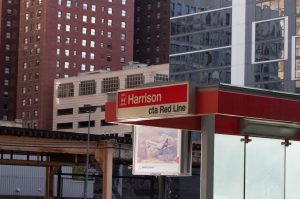

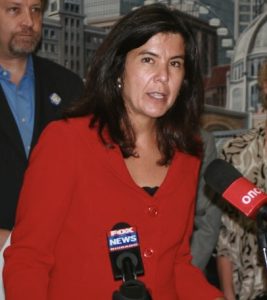
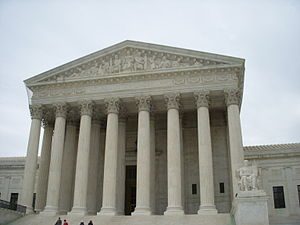



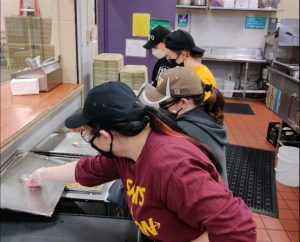

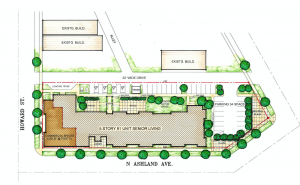
Be First to Comment